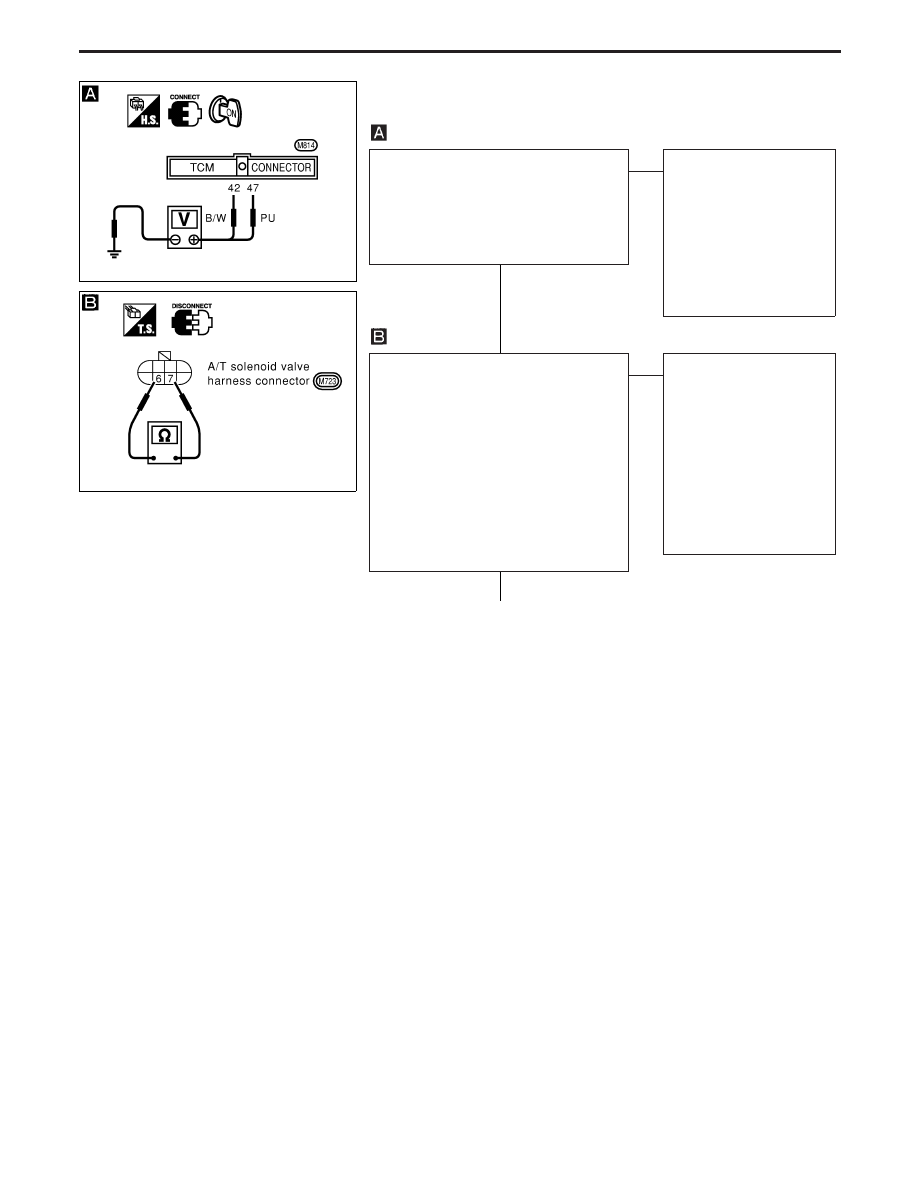Nissan Terrano r20e. Manual - part 20

DIAGNOSTIC PROCEDURE
CHECK TCM POWER SOURCE.
1. Turn ignition switch to “ON” position.
(Do not start engine.)
2. Check voltage between TCM terminals
q
42
,
q
47
and ground.
Battery voltage should exist.
OK
E
NG
Check the following items:
I
Harness for short or
open between ignition
switch and TCM (Main
harness)
I
Ignition switch and fuse
Refer to EL section
(“POWER SUPPLY
ROUTING”).
CHECK A/T FLUID TEMPERATURE
SENSOR WITH TERMINAL CORD
ASSEMBLY.
1. Turn ignition switch to “OFF” position.
2. Disconnect terminal cord assembly
connector in engine compartment.
3. Check resistance between terminals
q
6
and
q
7
when A/T is cold.
Resistance:
Cold [20°C (68°F)]
Approximately 2.5 k
Ω
4. Reinstall any part removed.
OK
E
NG
1. Remove oil pan.
2. Check the following
items:
I
A/T fluid temperature
sensor
Refer to “COMPONENT
INSPECTION” on next
page.
I
Harness of terminal cord
assembly for short or
open
q
A
(Go to next page.)
YAT316
YAT317
H
H
TROUBLE DIAGNOSIS FOR BATT/FLUID TEMP SEN
A/T Fluid Temperature Sensor and TCM Power
Source (Cont’d)
AT-77